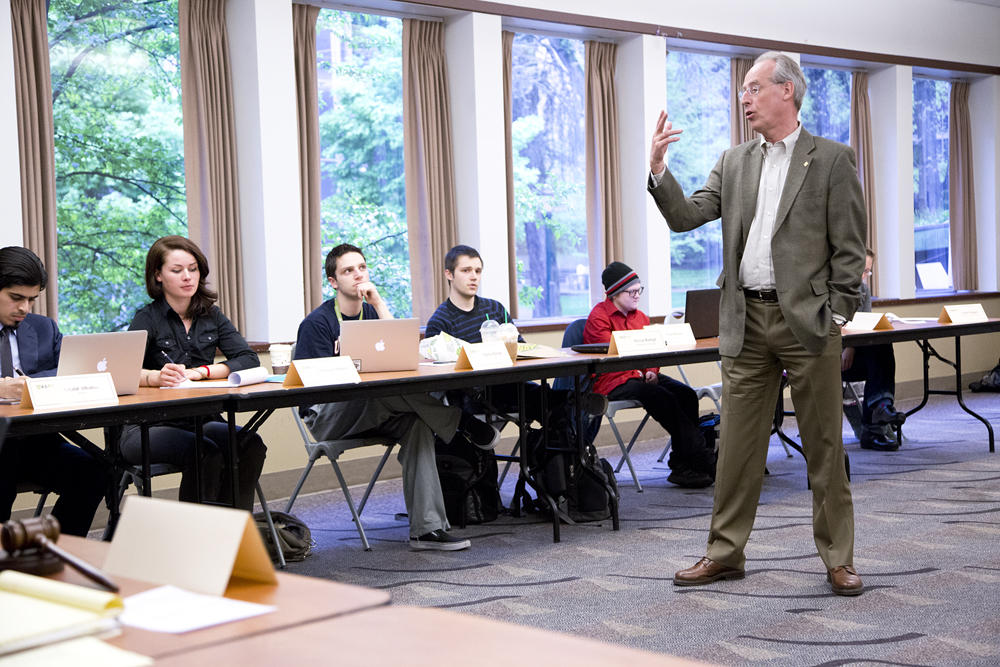Portland State and Oregon Health and Science University are the leading partners in the forthcoming Life Sciences Collaborative Complex, to be located on the South Waterfront.
Life Science Collaborative Complex brings together five universites
Portland State and Oregon Health and Science University are the leading partners in the forthcoming Life Sciences Collaborative Complex, to be located on the South Waterfront.
The building will house bioscience research and instructional facilities for five universities: Oregon Health and Science University, Portland State University, Oregon State University, University of Oregon and Oregon Institute of Technology.
In the governor’s recommended budget for 2009–11 is an allotted $250 million to create an inter-institutional facility for bioscience, medical and pharmacy research.
The figure will be closer to between $170 million and $200 million once the project is completed, with OHSU responsible for about 60 percent of the cost, according to Lindsay Desrochers, Portland State’s vice president of Finance and Administration.
According to the Oregon University System, the 300,000-square-foot building will be located on a vacant lot that the Schnitzer family donated to OHSU in 2004.
Marvin Kaiser, dean of Portland State’s College of Liberal Arts and Sciences, said Portland State is asking for both a dedicated space and shared space in the building.
“The shared space concept is important as it demonstrates the partnered nature of the project,” Kaiser said. “In terms of dedicated space, we are projecting the need for about 10 to 15 percent of the space. We are sharing, along with the other universities, much more of the space.”
Kaiser said about one half of the space is planned for instructional usage with classrooms and laboratories. The building may also be home to Oregon State University’s College of Pharmacy and health-related programs at the Oregon Institute of Technology.
Out of the Portland State students with a declared major, about 1,200 are in life sciences, which includes chemistry, biology and general sciences. This is according to a spring 2009 census count by the Office of Institutional Research and Planning.
Desrochers said that when construction of the new Life Sciences Collaborative Complex is finished, the need for new research space at Portland State will be at its greatest.
“Research space is one of the fastest growing areas,” Desrochers said. “The projection we saw a few years ago is that within a decade we will max out the research space on this campus, so by the time this building is built, we will be halfway there.”
Desrochers said students will benefit from working in such a facility due to the collaborative nature of the project.
“I like to think of this building as creating the synergy that you get when you have several institutions working together,” Desrochers said. “It’s always good to have students in proximity to activities critical to health sciences. It’s a great opportunity to be in an environment where, ultimately, they may be working in the future.”
Faculty also gets the opportunity to work on more collaborative projects with their peers in the sciences.
Provost Roy Koch said the space will be used by Portland State faculty to continue their existing research, with faculty splitting time between instructional work on campus, and research work at the South Waterfront.
Desrochers said the project brings collaboration between professional health clinicians at OHSU and lab researchers at Portland State.
Kevin Reynolds, chair of Portland State’s chemistry program, said a collaboration with OHSU is a positive addition to research work.
“In the last 18 months, the chemistry faculty received $11 million in research funding,” Reynolds said. “A significant portion of that money involves collaboration with OHSU, so it makes a lot of sense to co-locate to pursue those researches.”
Reynolds’ particular research is regarding anti-malarial and anti-fungal drugs. Reynolds said he also has another project looking at second-generation biofuel, and the chemistry department as a whole is looking at new diagnostic incentive in medicine.
“Whenever you put a bunch of scientists from different disciplines from different universities together, it stimulates creative science and collaboration,” said Anna-Louise Reysenbach, chair of Portland State’s biology department. “If you can stimulate collaboration and creative science, there’s the probability of making huge discovery.”
Desrochers said the building will strive to be sustainable in design and will achieve at least a silver certification in Leadership in Energy and Environmental Design.



